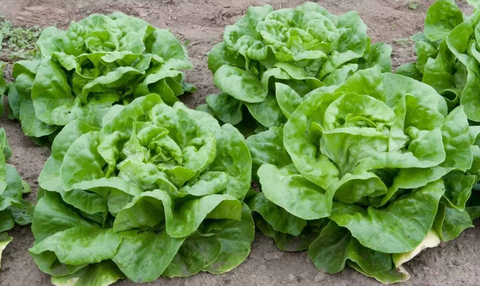As the crisp air of autumn descends and winter approaches, the threat of frost becomes a concern for gardeners. Frost can wreak havoc on delicate plants, causing damage to leaves, flowers, and even the overall health of your garden. However, with the right strategies, you can shield your green haven from the chilling effects of frost. In this guide, we'll delve into effective frost prevention techniques to ensure your garden thrives even in the coldest temperatures.The following content also has some reference value for raised garden beds.

Understanding Frost: The Culprit Behind Garden Woes
Frost occurs when temperatures drop low enough to freeze the moisture in the air and on plant surfaces. It's particularly troublesome for tender plants, as the ice crystals formed during frost can rupture plant cells, leading to irreversible damage. Knowing the signs of impending frost and implementing preventive measures is crucial for safeguarding your garden.
1. Stay Informed: Monitoring Frost Conditions
Before implementing frost prevention strategies, it's essential to keep a close eye on weather forecasts. Be attentive to temperature predictions, especially during late fall and early spring when frost is more likely to occur. Stay informed about the specific needs of your plants and the cold tolerance of each species in your garden.
2. Mulching Magic: Blanketing Your Plants
Mulching is a versatile practice that offers numerous benefits, including insulation against frost. A layer of organic mulch, such as straw, leaves, or bark, acts as a protective blanket for plant roots and soil. The insulating properties of mulch help regulate soil temperature, preventing rapid cooling and minimizing the risk of frost damage.
3. Cloaked in Covers: Frost Blankets and Row Covers
For individual plants or entire garden beds, frost blankets, and row covers are valuable tools. These protective coverings act as a shield against frost while allowing sunlight to penetrate. They trap heat emitted by the soil, creating a microclimate that keeps plants warmer than the surrounding air. Ensure that the covers are securely anchored to prevent heat loss and provide adequate support for plant growth.

4. Water Wisdom: Thermal Mass for Temperature Regulation
Water has a unique ability to retain and release heat, making it a valuable ally in frost prevention. Water your garden thoroughly before an expected frost, as moist soil and plant tissues absorb and store heat more effectively than dry ones. This stored heat is gradually released during the night, helping to moderate the temperature around plants.
5. Windbreaks: Natural Shields Against Frost
Wind can exacerbate the impact of frost by removing the insulating layer of air around plants. Installing windbreaks, such as fences or strategically planted shrubs and trees, helps mitigate this effect. Windbreaks create a barrier that reduces heat loss and shields plants from the chilling effects of cold winds.
6. Timing Matters: Frost-Resistant Planting
Strategic planning plays a crucial role in frost prevention. Consider the average date of the last spring frost and the first fall frost in your region when selecting plants for your garden. Choose frost-resistant varieties and stagger planting times to minimize the risk of exposing young, vulnerable plants to frost.
7. Cold Frames and Greenhouses: Enclosed Protection
For more extensive frost protection, consider using cold frames or greenhouses. These structures provide enclosed environments where temperature and humidity can be controlled. Cold frames are especially useful for hardening off seedlings or protecting delicate plants during transitional seasons.
8. Emergency Action: Frost Cloth and Old Blankets
In unexpected frost events, act swiftly to protect vulnerable plants. Frost cloth, old blankets, or even burlap sacks can be draped over plants for temporary insulation. Be sure to remove these coverings during the day to prevent overheating and allow sunlight to reach the plants.

Conclusion: Nurturing Nature Despite the Chill
Frost doesn't have to spell disaster for your garden. By combining vigilance, strategic planning, and the right protective measures, you can shield your plants from the cold embrace of frost. Embrace these frost prevention strategies as tools in your gardening arsenal, ensuring that your garden thrives even when temperatures plummet. With a proactive approach and a touch of horticultural care, you can nurture nature through the frosty nights and enjoy a flourishing garden year-round. Happy gardening!









